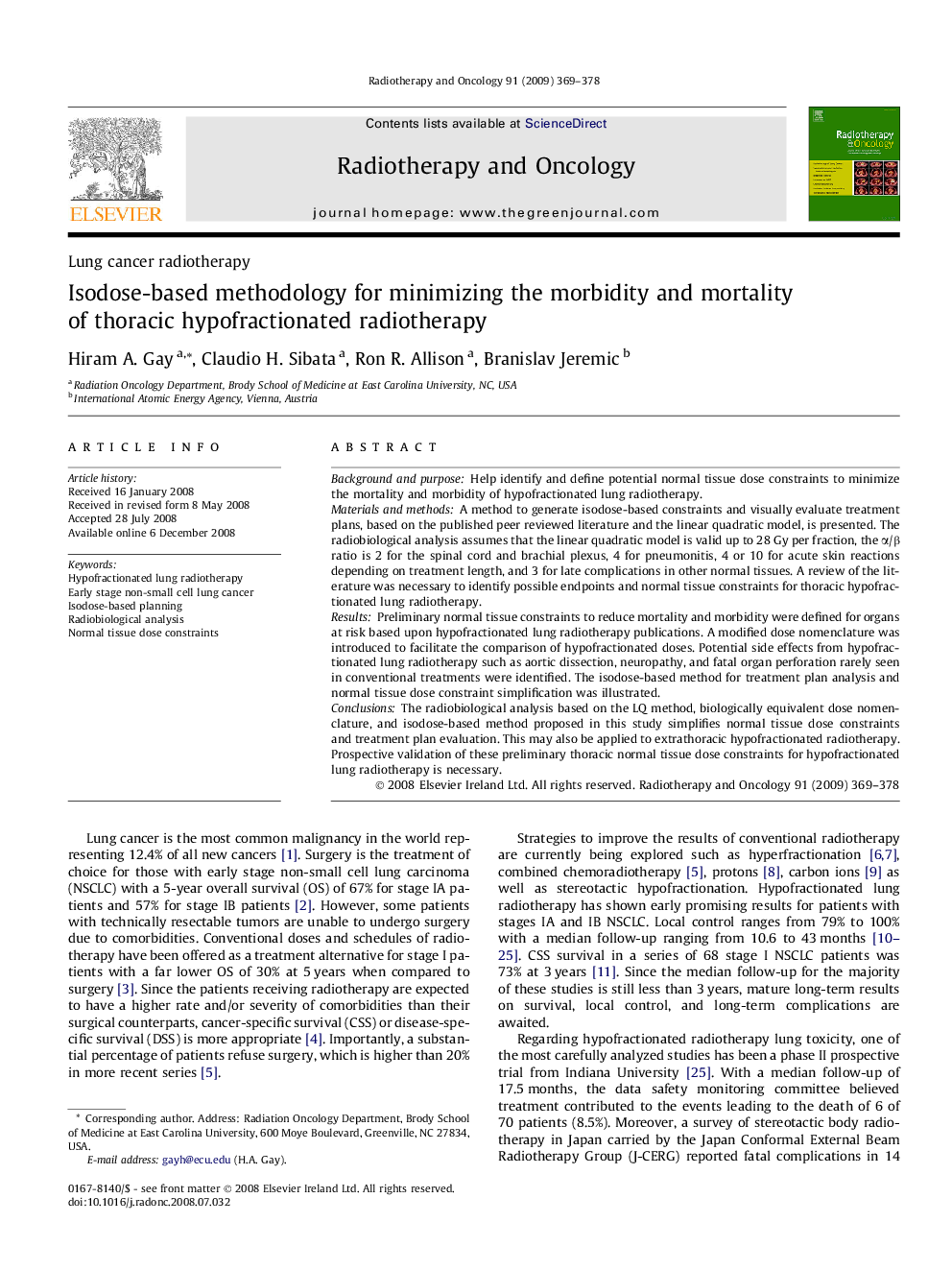| کد مقاله | کد نشریه | سال انتشار | مقاله انگلیسی | نسخه تمام متن |
|---|---|---|---|---|
| 2159119 | 1090850 | 2009 | 10 صفحه PDF | دانلود رایگان |

Background and purposeHelp identify and define potential normal tissue dose constraints to minimize the mortality and morbidity of hypofractionated lung radiotherapy.Materials and methodsA method to generate isodose-based constraints and visually evaluate treatment plans, based on the published peer reviewed literature and the linear quadratic model, is presented. The radiobiological analysis assumes that the linear quadratic model is valid up to 28 Gy per fraction, the α/β ratio is 2 for the spinal cord and brachial plexus, 4 for pneumonitis, 4 or 10 for acute skin reactions depending on treatment length, and 3 for late complications in other normal tissues. A review of the literature was necessary to identify possible endpoints and normal tissue constraints for thoracic hypofractionated lung radiotherapy.ResultsPreliminary normal tissue constraints to reduce mortality and morbidity were defined for organs at risk based upon hypofractionated lung radiotherapy publications. A modified dose nomenclature was introduced to facilitate the comparison of hypofractionated doses. Potential side effects from hypofractionated lung radiotherapy such as aortic dissection, neuropathy, and fatal organ perforation rarely seen in conventional treatments were identified. The isodose-based method for treatment plan analysis and normal tissue dose constraint simplification was illustrated.ConclusionsThe radiobiological analysis based on the LQ method, biologically equivalent dose nomenclature, and isodose-based method proposed in this study simplifies normal tissue dose constraints and treatment plan evaluation. This may also be applied to extrathoracic hypofractionated radiotherapy. Prospective validation of these preliminary thoracic normal tissue dose constraints for hypofractionated lung radiotherapy is necessary.
Journal: Radiotherapy and Oncology - Volume 91, Issue 3, June 2009, Pages 369–378